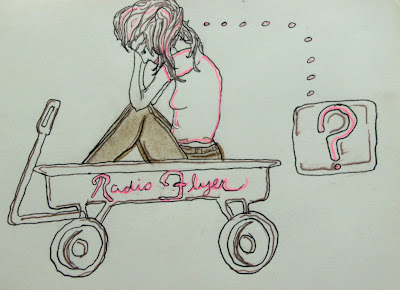Today, darlings, we are going to go a little bit off theme. Today's phrase is not something that I don't understand nor is it something that i use improperly. It is something that I COMPLETELY understand because it is an extremely simple phrase to understand. That aside, it's something that I hear people say incorrectly A LOT. What is it? It is this:
The right way: "I couldn't care less."
The wrong way: "I could care less."
See what I mean? When we as conversationalists use this phrase what we mean is "There is no possible way I could care any less about (blank). I already don't care at all, so it would be impossible for me to care any less than i do now." Simple, right? But you know and I know that just as often you hear people say the latter of the above phrases which basically means "I care about (blank). Maybe not more than anything else in the world, but I do care, as illustrated by the fact that it would be possible for me to care less."
Let's see what the internets say!!
First, here is a little graph, which proves with science that I am correct.
While we could put the whole thing to bed right there, now that we have graphs on our side, indulge me just a little further please.
A quick Google search revealed to me this list of bands who have used the phrase "I could care less" to mean that they don't care at all in song titles and lyrics:
Devildriver
Incubus
Fall Out Boy
Taking Back Sunday
Beyonce
While you won't really catch me endorsing any of these bands except Beyonce (girl, you know how I do.) it irritates me to no end that nowhere during the lengthy process of song creation was it pointed out to these people that this phrase sounds RIDICULOUS and is the exact OPPOSITE of what they are trying to express. As was pointed out to me last night, this is very similar to the David Cross bit about people misusing the word literally. You know the one, "....that was so funny, I literally shit my pants". Ho man!! Let's.
Moving on....
In the interest of tempering my ire, I will show you this, which I found on Wisegeek.com:
There is some suggestion that the phrase “I could care less” may have been adopted because it fit into certain Yiddish phrases that deliberately mean the opposite and can be viewed as sarcastic. Such phrases include, “I should be so lucky,” which really means you’re not likely to have the luck. Another phrase, “Tell me about it,” means the opposite. It’s merely a way to agree with the speaker. Alternately, speaking the term “Testify!” as used in certain Christian churches, is a similar agreement that seldom means someone is actually going to sit down or stand up and give a testimony of how they converted to Christianity.
Another theory, advanced by linguistics specialist Henry Churchyard, suggested the statement “You know nothing and you care less” used in Jane Austen’s Mansfield Park is the origin of the term. If this were the case, the “know nothing” would be comparative to caring less than the little you know. The current version of the phrase would then represent idiom by omission.
It should be stated that Mansfield Park is one of Austen’s least popular books, and was in general slammed by the critics during Austen’s time and thereafter. That people would quote from it is in significant dispute. However, if Austen used the term as one common to her day, it’s possible it was already in use. The whole quote “You know nothing and you care less, as people say,” is important because it advances the possibility the phrase was in use in Austen’s day and she is not its inventor.
In any case, “I could care less,” must be interpreted as not caring at all. Whether by omission, design, laziness or quote, it’s one of those mixed up idioms that plagues learners of English.
While I respect both the wisdom and the geekiness of that explanation I still REFUSE TO ACCEPT IT.
To wrap things up let's take a look at some personal examples:
I couldn't care less about: The musicians listed above, with the notable exception of Beyonce.
I could care less (a lot less) about: this beautiful peacock.
The End.






